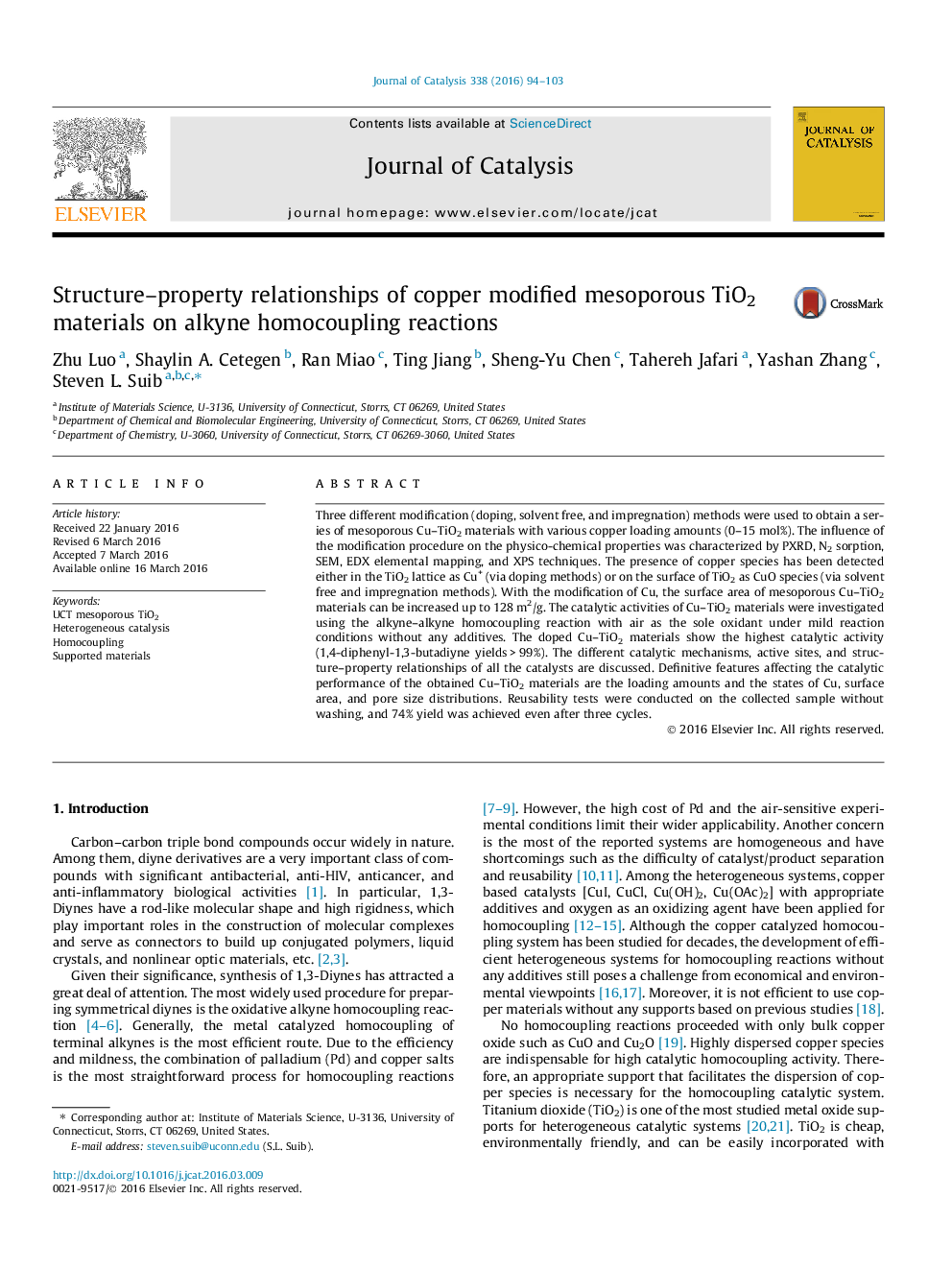| کد مقاله | کد نشریه | سال انتشار | مقاله انگلیسی | نسخه تمام متن |
|---|---|---|---|---|
| 60621 | 47540 | 2016 | 10 صفحه PDF | دانلود رایگان |

• Cu modified mesoporous TiO2 materials were synthesized via three methods.
• The copper doped TiO2 samples show high yields (>99%) and reusability in homocoupling reactions without additives.
• Different mechanisms of the homocouplings on different samples were proposed.
• The definite roles of materials structure were elucidated.
Three different modification (doping, solvent free, and impregnation) methods were used to obtain a series of mesoporous Cu–TiO2 materials with various copper loading amounts (0–15 mol%). The influence of the modification procedure on the physico-chemical properties was characterized by PXRD, N2 sorption, SEM, EDX elemental mapping, and XPS techniques. The presence of copper species has been detected either in the TiO2 lattice as Cu+ (via doping methods) or on the surface of TiO2 as CuO species (via solvent free and impregnation methods). With the modification of Cu, the surface area of mesoporous Cu–TiO2 materials can be increased up to 128 m2/g. The catalytic activities of Cu–TiO2 materials were investigated using the alkyne–alkyne homocoupling reaction with air as the sole oxidant under mild reaction conditions without any additives. The doped Cu–TiO2 materials show the highest catalytic activity (1,4-diphenyl-1,3-butadiyne yields > 99%). The different catalytic mechanisms, active sites, and structure–property relationships of all the catalysts are discussed. Definitive features affecting the catalytic performance of the obtained Cu–TiO2 materials are the loading amounts and the states of Cu, surface area, and pore size distributions. Reusability tests were conducted on the collected sample without washing, and 74% yield was achieved even after three cycles.
Figure optionsDownload high-quality image (121 K)Download as PowerPoint slide
Journal: Journal of Catalysis - Volume 338, June 2016, Pages 94–103